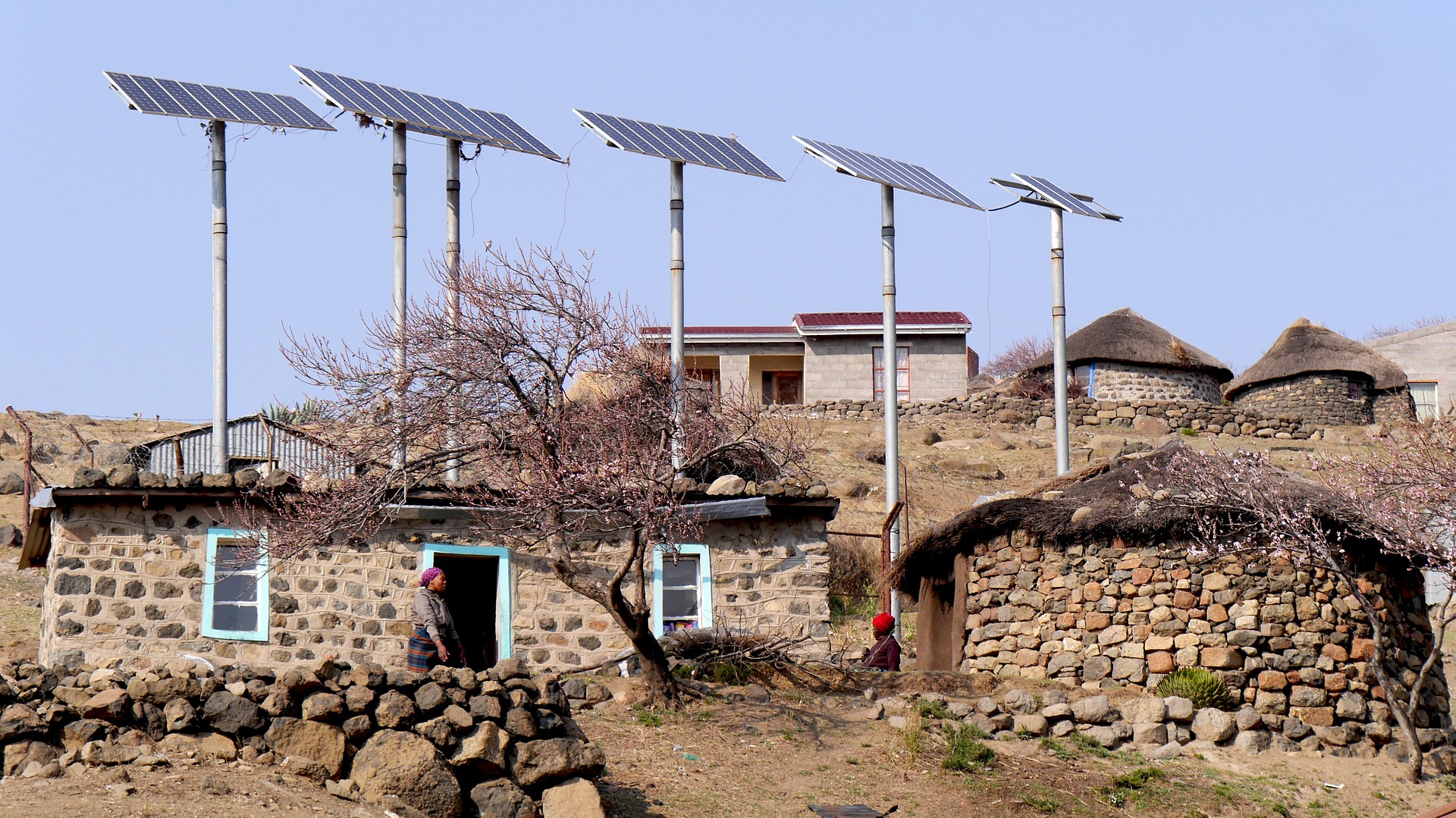Lesotho electricity demand profile from 2010 to 2030
DOI:
https://doi.org/10.17159/2413-3051/2021/v32i1a7792Keywords:
MAED; energy demand forecast; electrification rate; declining average household consumptionAbstract
This study undertook a 2010 to 2030 electricity demand profile for Lesotho, with 2010 used as the base year. The demand forecast was modelled using the International Atomic Energy Agency Model for Analysis of Energy Demand, largely because of its proven ability to accurately forecast demand in developing economies based on socio-economic, technology and demography variables. The model correlates well with the actual data, where data exists, and predicts that by 2030 Lesotho will achieve a national electrification rate of 54.2%, with 95% for urban households and 14% for rural households, up from 19.4%, 54.1% and 1.8% respectively in the base year. Moreover, in the same period, the forecast for the most likely scenario gives the following results: the maximum demand will increase to 211 MW from 121 MW; the annual average household energy consumption will continue its decline to 1 009 kWh/household from 1 998 kWh/household; and the total consumption will increase to 1 128 284 MWh from 614 868 MWh. The overall low growth rate is attributed to the consistently declining average household consumption that is contrary to international norms. The forecast results gave a root mean square percentage error of 1.5% and mean absolute percentage error of 1.3%, which implied good correlation with the actual data and, hence, confidence in the accuracy of the results.
HighlightsBetween 2030 and 2010:
- Achievement of national electrification rate of 54.2% up from 19.4%.
- Electrification: 95% urban, 14% rural households, from 54.1% and 1.8% respectively.
- The maximum demand will increase to 211 MW from 121 MW.
- Annual average household consumption will decline to 1 009 kWh/household from 1,998 kWh/household
Downloads
Metrics
References
Adeoye, O. and Spataru, C. 2019. Modelling and forecasting hourly electricity demand in West African countries. Applied Energy 242: 311–333.
Al-Musaylh, M.S., Deo, R.C., Adamowski, J.F. and Li, Y. 2018. Short-term electricity demand forecasting with MARS, SVR and ARIMA models using aggregated demand data in Queensland, Australia. Advanced Engineering Infor-matics 35: 1–16.
Aman, S., Ping, H.W. and Mubin, M. 2011. Modelling and forecasting electricity consumption of Malaysian large steel mills. Scientific Research and Essays 6.
Bhattacharyya, S.C. and Timilsina, G.R. 2010a. Modelling energy demand of developing countries: Are the specific features adequately captured? Energy Policy 38: 1979–1990.
Bhattacharyya, S.C. and Timilsina, G.R. 2010b. A review of energy system models. International Journal of Energy Sector Management 4: 494–518.
Bhattacharyya, S.C. and Timilsina, G.R. 2009. Energy demand models for policy formulation: A comparative study of energy demand models (Working paper No. 4866), Policy Research. The World Bank.
Bureau of Statistics. 2016. Census summary: key findings. 2016. Bureau of Statistic, Maseru, Lesotho.
CBL [Central Bank of Lestho]. 2016. Lesotho Economic Outlook 2015 - 2018, Central Bank of Lesotho, Maseru, Leso-tho.
Elamin, N. and Fukushige, M. 2018. Modeling and forecasting hourly electricity demand by SARIMAX with interac-tions. Energy 165: 257–268.
Government of Lesotho. 2007. National Electrification Master Plan (No. 64131- 0–13). Government of Lesotho, Ma-seru, Lesotho.
Hainoun, A., Seif-Eldin, M.K. and Almoustafa, S. 2006. Analysis of the Syrian long-term energy and electricity de-mand projection using the end-use methodology. Energy Policy 34: 1958–1970.
Kichnoge, B., John, G.R., Mkilaha, I.S.N. and Hameer, S. 2014. Modelling of Future Energy Demand for Tanzania. Journal of Energy Technologies and Policy 4: 16–31.
LEWA [Lesotho Electricity and Water Authority]. 2017. Lesotho Electricity and Water Authority - Annual report 2016/17. LesothoElectricity and Water Authority, Maseru, Lesotho.
LEWA [Lesotho Electricity and Water Authority]. 2018. Electricity Supply Cost of Service Study Report. Lesotho Elec-tricity and Water Authority (LEWA), Maseru, Lesotho.
MEM [Ministry of Energy and Meteorology]. 2015. Lesotho Energy Policy 2015 - 2025.
Ministry of Energy and Meteorology , Maseru, Lesotho
MEM [Ministry of Energy and Meteorology], 2017. Scaling-up renewable energy in low income countries - invest-ment plan for Lesotho. Ministry of Energy and Meteorology, Maseru, Lesotho
Minnaar, U.J., Visser, W. and Crafford, J. 2017. An economic model for the cost of electricity service interruption in South Africa. Utilities Policy 48: 41–50.
Mpholo, M., Mothala, M., Mohasoa, L., Eager, D., Thamae, R., Molapo, T. and Jardine, T., 2020. Determination of the lifeline electricity tariff for Lesotho. Energy Policy 140
Ramanathan, R., Engle, R., Granger, C.W.J., Vahid-Araghi, F. and Brace, C., 1997. Short-run forecasts of electricity loads and peaks. International Journal of Forecasting 13: 161–174.
SAPP [Southern African Power Pool]. 2016. Southern African Power Pool - Annual Report 2016. Southern African Power Pool, Harare, Zimbabwe
Senatla, M., Nchake, M., Taele, B.M. and Hapazari, I. 2018. Electricity capacity expansion plan for Lesotho – implica-tions on energy policy. Energy Policy 120: 622–634.
Soares, L.J. and Souza, L.R. 2006. Forecasting electricity demand using generalized long memory. International Jour-nal of Forecasting 22: 17–28.
Steinbuks, J. 2019. Assessing the accuracy of electricity production forecasts in developing countries. International Journal of Forecasting 35: 1175–1185.
Suganthi, L., Samuel, A.A., 2012. Energy models for demand forecasting—A review. Renewable and Sustainable En-ergy Reviews 16: 1223–1240.
TimesLive, 2019. Electricity prices to rise 9.4% this year, 8.1% next year. Available at https://www.timeslive.co.za/news/south-africa/2019-03-07-electricity-prices-to-rise/ (Accessed: 4 July 2019).
United Nations. 2019. Lesotho Population 2019 (Live). Available at: https://worldpopulationreview.com/countries/lesotho-population (Accessed: 27 July 2019)
Yukseltan, E., Yucekaya, A. and Bilge, A.H., 2017. Forecasting electricity demand for Turkey: Modeling periodic vari-ations and demand segregation. Applied Energy 193: 287–296.

Downloads
Additional Files
Published
How to Cite
Issue
Section
License
Copyright (c) 2021 M. Mpholo, M. Mothala, L. Mohasoa, D. Eager, R. Thamae, T. Molapo, T. Jardine

This work is licensed under a Creative Commons Attribution-ShareAlike 4.0 International License.



.png)